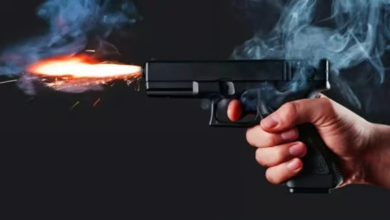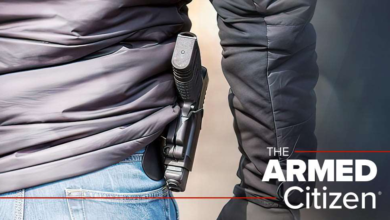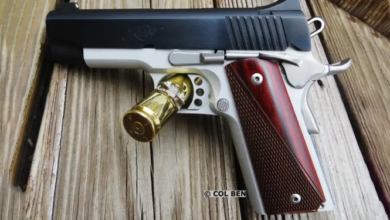Norma Monolithic Hollow Point (MHP) Bullet: Cold-Formed for Extreme Terminal Performance

The 9mm Luger was being abandoned in the 1980s and ’90s by law enforcement agencies in favor of more potent rounds like the .40 S&W, but today the pendulum has swung and virtually every agency in the country relies once again on 9mm sidearms. Clearly, the cartridge itself didn’t change, so what happened?
In short, bullets have improved significantly, and today’s 9mm projectiles are more effective and efficient at stopping a threat than those available four decades ago. Modern bullets are better engineered and more thoroughly evaluated and are therefore much more effective.
But there’s still room for improvement in the development of personal defense pistol bullets. Take, for instance, the Norma Monolithic Hollow Point bullet, or MHP. As the name implies, it’s a monolithic bullet, which isn’t anything new, but the MHP manufacturing process differs substantially from most other monolithic bullets.
“The MHP bullet is cold-formed like a lead bullet, not turned on a lathe,” says Daniel Cox, vice president of product development at Norma. That matters because turning copper bullets on a lathe doesn’t allow the level of refinement you get from the cold-forming process.
“Cold forming gives us the opportunity to experiment with factors like bullet geometry and hardness,” Cox says. Those factors can have a major impact on performance, and having more freedom to manipulate the bullet’s construction produces better energy transfer and more consistent expansion and penetration.
MHP bullets feature nickel plating and four flattened sections on the ogive that correspond with the location of each of the four petals that are created when the bullet expands. The nose section of the bullet is cavitated, and skiving helps initiate expansion.
In bare gel and barrier tests, recovered 9mm defense bullets measure, on average, around 0.6 inch wide. The MHP, however, consistently expands half again as much, roughly 0.9 inch in bare gel. The result is complete energy transfer and debilitating hydrostatic shock.
“The MHP has all the inherent benefits of a monolithic bullet,” says Cox. “That means no core/jacket separation.”
He says another benefit is reduced bullet weight, and the MHP 9mm load uses a 108-grain bullet, which is substantially lighter than lead-core self-defense bullets. Lighter bullets dampen recoil and muzzle rise, and that means faster follow-up shots.
Over the decades, FBI performance testing has become the standard by which all bullet designs are judged, for better or worse. However, bullets that meet the FBI’s standard aren’t the only ones suitable for self-defense. The Norma MHP joins the ranks of bullets like Federal’s Punch that are designed to perform out of carry-size pistols in self-defense situations without the added barrier penetration capabilities that defensive shooting generally doesn’t demand.
Norma designed the MHP to penetrate between 10.5 and 12 inches in 10 percent FBI gel, and that’s what these bullets consistently achieve. It’s on the lower edge of FBI standards, but MHP bullets are designed to reduce the odds of overpenetration.
Every MHP bullet is loaded into Norma cases with a special nickel/tin finish. The nickel/tin looks good, and it also offers exceptional corrosion resistance and accepts the high polish finish required to aid in lubricity and ensure reliable feeding and function. The case, combined with the nickel-plated bullet profile, makes the MHP a very smooth-feeding round.





